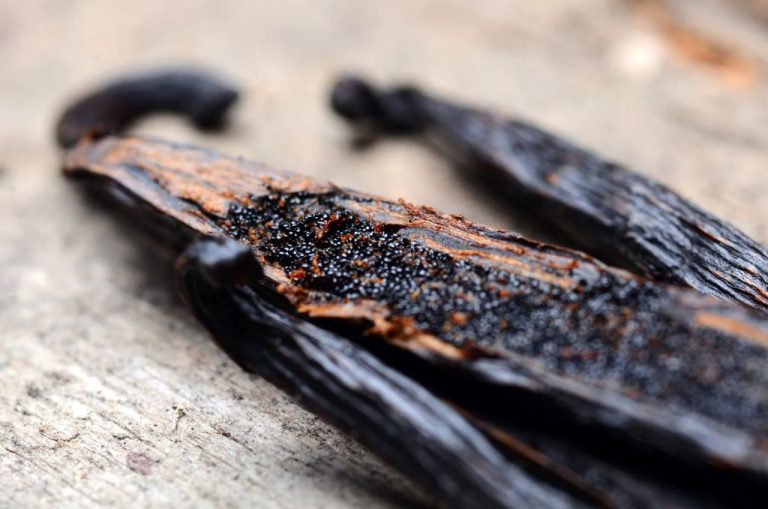What Is Sage Scent Used For?
Sage is a popular aromatic herb that has been grown for centuries. The name sage comes from the Latin word “salvere” which means “to save or heal.” There are many varieties of sage, but common sage (Salvia officinalis) is the one most people are familiar with.
Sage has been used since ancient times for culinary, medicinal, and spiritual purposes. The ancient Greeks and Romans used sage for its antiseptic and healing properties. In medieval times, sage was thought to impart wisdom, and people would chew sage leaves to improve memory and concentration. Monks would drink sage tea to calm the nerves and aid in meditation.
Today, sage remains a popular herb appreciated for its earthy, pine-like aroma and savory, slightly peppery flavor. The mellow scent of sage makes it a favorite ingredient in perfumes, soaps, and aromatherapy. From the kitchen to the medicine cabinet, sage continues to be valued for its versatile benefits.
Aromatherapy
The scent of sage has been used in aromatherapy for centuries due to its calming and soothing effects. When inhaled, the camphoraceous and herbaceous aroma of sage can help relieve anxiety, clear the mind, and promote a sense of relaxation in both the body and mind.
Several compounds found in sage including camphor, 1,8-cineole, and α-thujone contribute to these soothing effects. Studies have found that sage essential oil can reduce stress markers and improve mood when diffused. The scent triggers receptors in the brain that lessen nervous tension.
Sage contains soothing terpenes known to have anti-anxiety and sedative effects when inhaled. This makes sage an ideal scent for relaxation blends and nighttime rituals. Diffusing a few drops of sage oil before bed can help calm a restless mind, relax the body, and promote more restful sleep.
Sage also pairs well with floral essential oils like lavender and neroli to enhance the calming benefits. Combining sage oil with carrier oils like jojoba or sweet almond oil can also be massaged into the skin or added to a warm bath to promote full-body relaxation through scent.
Culinary Uses
Sage has a robust, earthy flavor profile and slight peppery or minty aroma that makes it popular for seasoning foods. It is commonly used to flavor meats, stuffings, and sauces.
The herb pairs wonderfully with poultry, and can be rubbed under the skin or mixed into the stuffing to add an extra layer of flavor to chicken or turkey dishes. It brings out the savory, rich notes in the dark meat while also enhancing the more delicate white meat. Sage is often used in holiday roasts and oven-baked chicken.
It also works nicely with pork, imparting a woodsy essence that offsets the meat’s richness. Sage is perfect for pork chops, roasts, sausages, and ground pork. It enhances the flavor in German and Italian-style pork dishes.
In addition to meats, sage adds warmth and dimension to savory bread stuffings. It provides an aromatic backdrop along with classic stuffing ingredients like celery, onions, and herbs. The herb’s woodsy notes pair well with earthy mushrooms and nuts like chestnuts in stuffing recipes.
Sage can also be used to add character to sauces and condiments. It is a key ingredient in many gravy recipes, mingling with pan drippings to infuse the sauce with flavor. The leaves or ground powder can be whisked into creamy sauces and dressings too.
Medicinal Benefits
Sage is well known for its medicinal properties and health benefits. The most notable medicinal uses of sage involve its anti-inflammatory and antioxidant effects.
The anti-inflammatory compounds in sage make it beneficial for treating inflammatory disorders. The rosmarinic acid and carnosic acid in sage have been shown to inhibit pro-inflammatory enzymes and cytokines. This helps reduce inflammation in conditions like arthritis, asthma, and inflammatory bowel disease.
Sage is also rich in antioxidant compounds like flavonoids and phenolic acids. These antioxidants help neutralize free radicals and prevent oxidative stress in the body. Oxidative stress contributes to chronic diseases and aging. The antioxidants in sage may help prevent neurodegenerative diseases like Alzheimer’s by protecting brain cells from damage.
The anti-inflammatory and antioxidant properties of sage make it a helpful natural remedy for a variety of inflammatory conditions and boosting overall health. More research is still needed, but the medicinal benefits of sage are promising.
Skin Care
Sage is believed to have antibacterial and anti-inflammatory properties that make it beneficial for various skin conditions when used topically. The primary skin conditions that sage may help treat include:
Treating Acne
The antioxidant and antimicrobial effects of sage make it useful for reducing acne. Sage contains phenolic acids that can inhibit the growth of bacteria that contribute to acne. Applying a sage salve, toner, or steam treatment to the skin may help calm inflammation and prevent future breakouts.
Dandruff
Sage is often recommended as a natural treatment for dandruff and dry scalp. The antibacterial and anti-inflammatory properties can help soothe itchiness and reduce flaking. Making a sage tea rinse or shampoo can help balance scalp pH levels and remove excess oil buildup that causes dandruff.
Eczema
The anti-inflammatory effects of sage may help reduce eczema flare-ups and irritation. Applying diluted sage essential oil or an ointment with sage infused oil to eczema-prone areas creates a barrier to protect skin and provide relief from itchiness and inflammation.
Household Cleaning
One of the most popular uses of sage is as a natural disinfectant and cleaning agent. The essential oils in sage contain powerful antimicrobial compounds like camphor, borneol, and thujone that can kill germs, bacteria, and viruses. Studies have found that sage oil is effective against common household pathogens like E. coli, Staphylococcus aureus, and even the stubborn norovirus.
To make a sage cleaning spray, boil 1 cup of fresh sage leaves in 1 quart of water for 30 minutes to infuse the water with sage’s essential oils. Let cool, then strain the leaves and pour the liquid into a spray bottle. Add 10-20 drops of sage essential oil for extra disinfecting power. Spritz this DIY sage spray on countertops, appliances, doorknobs, and other surfaces to clean and sanitize them naturally.
You can also simmer sage leaves in vinegar for an hour to make a cleansing sage vinegar. Combine this with water in a spray bottle and use it as an all-purpose household disinfectant and deodorizer. The antiviral and antibacterial effects of sage make it an excellent ingredient for natural, non-toxic cleaners and disinfectants.
Insect Repellent
Sage has natural insect repellent properties that make it effective at keeping mosquitos, flies, ants and other pests at bay. The strong scent of sage confuses insects and discourages them from coming near. Burning sage or rubbing sage essential oils on your skin emits the scent into the air, creating a protective barrier. You can also make your own all-natural insect repellent spray by steeping sage leaves in water and witch hazel. The natural compounds in sage have been shown to be just as effective as DEET at repelling mosquitos. Using sage as an insect repellent is a safe, natural way to avoid bites and stings from irritating bugs.
Spiritual Uses
Burning sage, often called smudging, has long been used for spiritual cleansing and purification purposes by many cultures. The smoke from burning sage is believed to clear negative energy and restore calmness and tranquility to spaces.
In Native American traditions, smudging ceremonies involve burning tied bundles of dried sage, moving the smoke through an area or even over a person’s body. This practice is thought to cleanse bad influences and restore spiritual balance. Many modern spiritual practitioners continue using sage smudging to purify homes, rooms, objects, and people’s auras or energy fields.
Sage smudging is commonly done before important events, ceremonies or rituals, moving into a new home, or when feeling there is stale or negative energy in a space. The smoke from sage is said to absorb this negative energy and refresh the energy of the space or person being smudged. Many people report feeling uplifted and rejuvenated after a sage smudging ritual.
When smudging, it’s important to keep windows open and avoid smoke inhalation. Overall, burning sage has remained an essential spiritual cleansing practice for many cultures over centuries.
DIY Crafts
The herbaceous, sweet, and earthy scent of sage can lend a wonderful aromatic quality to homemade craft projects and decorations. Here are some ideas for incorporating sage into DIY crafts:
Potpourri – Mix together dried sage leaves, rose petals, cinnamon sticks, cloves, and orange peels. Place the potpourri mixture into a jar or sachet and use it to scent your home. The sage will provide an herbal, woodsy element.
Scent bags – Sew small bags from decorative fabric and fill them with dried sage. Tie the bags closed with ribbon and place them in drawers, closets, or vehicles to lightly scent the space. Sage is a natural moth repellent too.
Wreaths and garlands – Interweave fresh or dried sage into wreaths, garlands, or swags to hang around the home. The sage will dry nicely and give off its scent for months.
Decorative bundles – Tie sage stems together with twine or raffia in small bundles. Use them as part of a centerpiece, place them in a vase, or hang them on the wall as natural art.
Conclusion
In summary, sage has a wide variety of uses and benefits. Its earthy, herbaceous fragrance makes it a popular choice for aromatherapy relaxation and stress relief. Culinary uses of sage include seasoning meats, stuffings, cheeses, and eggs. Medicinally, sage has antioxidant, anti-inflammatory, and memory-boosting properties. For skin care, sage can help treat acne, inflammation, and excess oil production. As a cleaning product, sage acts as a natural disinfectant and odor remover. Sage deters insects like mosquitos and flies when used as an insect repellent. Spiritually, sage is thought to cleanse negative energy. Finally, the fragrant leaves can be used in crafts like potpourri, wreaths, Smudge sticks, and more. With its versatility and therapeutic effects, sage is an excellent multi-purpose herb to keep on hand.




